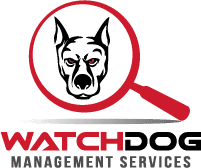Choosing the right cloud service can significantly impact your business’s cost savings. Understanding the differences between Software as a Service (SaaS), Platform as a Service (PaaS), and Infrastructure as a Service (IaaS) is crucial for making an informed decision that aligns with your specific needs and budget constraints.
Key Takeaways
- Understand Your Needs: Evaluate your business requirements to determine whether Software as a Service (SaaS), Platform as a Service (PaaS), or Infrastructure as a Service (IaaS) aligns best with your goals.
- Consider Cost Implications: Calculate the costs associated with each cloud service model, including subscription fees, maintenance expenses, and scalability factors to make an informed decision.
- Prioritize Security: Prioritize security considerations when selecting a cloud service, ensuring data protection, compliance with regulations, and robust security measures are in place.
- Tailor Your Choice: Choose a cloud service model that not only saves costs but also meets your specific business needs, promoting efficiency and scalability.
- Balance Features and Expenses: Strike a balance between the features offered by each cloud service model and the associated costs to optimize your business operations effectively.
- Make an Informed Decision: Combine insights from understanding cloud computing basics, exploring SaaS, PaaS, and IaaS, calculating costs, and considering security to make the right choice for your business.
Cloud Computing Basics
Definition
IaaS, PaaS, and SaaS in cloud computing stand for Infrastructure as a Service, Platform as a Service, and Software as a Service. Cloud services offer on-demand access to resources over the internet. Choosing the right cloud model is crucial for cost-efficiency.
Businesses benefit from cloud services by avoiding upfront hardware and software investments. Cloud solutions can enhance productivity and flexibility by enabling remote work and collaboration. Selecting the appropriate cloud service allows scalability and agility, adapting to business needs efficiently.
Business Benefits
Cloud services eliminate the need for businesses to invest in physical infrastructure, reducing costs significantly. Increased productivity stems from easy access to data and applications from anywhere with an internet connection. Flexibility in scaling resources up or down ensures optimal performance without unnecessary expenses.
Service Models
IaaS provides the most control over infrastructure management, allowing businesses to customize virtual resources according to their needs. PaaS offers a platform for developers to build, deploy, and manage applications without worrying about underlying infrastructure. SaaS delivers ready-to-use software applications accessible through the internet, simplifying deployment and maintenance processes.

Understanding SaaS
Key Benefits
Businesses benefit from SaaS due to its easy accessibility and ability to provide automatic updates without manual intervention. This results in reduced maintenance efforts.
One advantage of PaaS is the rapid application development it offers, enabling businesses to quickly create and deploy applications to meet market demands efficiently.
Using IaaS provides companies with a cost-effective solution for their infrastructure needs while offering scalability options, allowing them to adjust resources based on demand fluctuations.
Potential Drawbacks
Security concerns are prevalent when utilizing public cloud providers for IaaS, as data may be vulnerable to breaches if not adequately protected.
The adoption of IaaS technology can pose challenges due to its complexity, requiring businesses to invest time and resources in understanding and implementing the infrastructure.
When using PaaS, potential data security issues may arise due to the shared nature of the platform, raising concerns about data isolation and protection.
Usage Examples
Businesses leverage IaaS for hosting applications and development environments, allowing them to scale resources based on workload requirements efficiently.
PaaS is commonly used in scenarios where rapid app development and deployment are crucial, enabling developers to focus on creating innovative solutions rather than managing infrastructure.
SaaS finds extensive use in software delivery and subscription-based services, providing users with easy access to applications without the need for installation or maintenance.
Exploring PaaS
Main Advantages
PaaS offers quick application development and deployment, streamlining the process for businesses aiming to launch software efficiently. It provides a platform where developers can focus solely on coding without worrying about infrastructure management. This results in faster time-to-market for new applications.
Businesses opting for IaaS gain full control over their infrastructure and resources, allowing them to customize their setup according to specific needs. This level of control enables scalability as businesses can adjust resources based on demand fluctuations. It also eliminates the need for investing in physical hardware, reducing upfront costs.
SaaS stands out for its easy accessibility and maintenance. Users can access software applications through the internet without needing to install or manage them locally. This convenience makes it an attractive option for businesses looking to streamline operations and reduce IT overheads.
Known Limitations
IaaS users face security concerns due to the shared nature of the underlying infrastructure. Businesses must implement robust security measures to protect sensitive data from potential breaches. Managing security patches and updates becomes crucial to mitigate risks.
PaaS may have limitations when it comes to customization and flexibility compared to self-managed infrastructure solutions like IaaS. While it accelerates development processes, businesses may encounter constraints in tailoring the platform to unique requirements.
SaaS users should be cautious about data security and privacy issues since data is stored off-site by the service provider. Depending solely on external servers could pose risks if proper security protocols are not in place.
Usage Scenarios
In scenarios requiring scalability and full control over infrastructure elements, IaaS shines as businesses can adjust resources dynamically based on demands. This flexibility is ideal for companies experiencing fluctuating workloads or planning rapid expansion.
PaaS finds its strength in scenarios where speed is essential, such as agile application development projects. Developers benefit from pre-configured environments that facilitate quick deployment without getting bogged down by infrastructure setup tasks.
SaaS is commonly used in scenarios where end-users require access to software solutions without dealing with installation hassles or maintenance headaches. Businesses looking to provide efficient software services to customers often opt for SaaS models.
Delving into IaaS
Core Benefits
IaaS offers resource scalability allowing businesses to adjust resources based on demand, optimizing costs efficiently. It enables cost management by paying only for the resources used, avoiding unnecessary expenses.
PaaS provides a robust and scalable environment for app development, streamlining the development process and enhancing productivity. It simplifies the deployment of applications, reducing time-to-market significantly.
SaaS ensures accessibility as users can access software from any location with an internet connection, promoting remote work flexibility. Automatic updates in SaaS guarantee that users always have access to the latest features and security patches.
Common Disadvantages
IaaS adoption introduces security challenges due to shared data centers, raising concerns about data privacy and compliance. The complexities associated with managing infrastructure can lead to operational issues if not handled properly.
PaaS may face common disadvantages like data security vulnerabilities, posing risks to sensitive information stored or processed within the platform. Limited control over the underlying infrastructure can be a drawback for businesses requiring specific configurations.
SaaS might have potential drawbacks such as limited customization options, restricting businesses from tailoring software to their unique requirements fully. Dependency on the service provider for updates and maintenance can sometimes lead to disruptions in operations.
Application Examples
- Hosting applications and development environments on IaaS platforms like Amazon Web Services (AWS) or Microsoft Azure.
- Utilizing PaaS solutions like Google App Engine or Microsoft Azure App Service for rapid app development and deployment.
- Real-world applications of SaaS include using Salesforce for customer relationship management (CRM) or Microsoft Office 365 for office productivity tools.

Choosing the Right Model
Assessing Business Type
Businesses should assess their infrastructure needs to find the suitable cloud service model. Consider factors like scalability, resource management, and application requirements. Differentiate between IaaS, PaaS, and SaaS based on specific business demands.
When evaluating cloud service models, businesses must analyze their operational structure, IT expertise, and software requirements. Small businesses may benefit from SaaS for cost-effectiveness and ease of use. On the other hand, larger enterprises might prefer IaaS for greater control over infrastructure.
Choosing the right cloud service model depends on various factors such as budget constraints, scalability needs, and data security requirements. Startups aiming for rapid growth may opt for PaaS to streamline development processes. Evaluate how each model aligns with business goals to make an informed decision.
Determining Needs
Understanding specific requirements is crucial in selecting the appropriate cloud service. Identify whether your business needs storage solutions, development platforms, or ready-to-use software applications. Match these needs with the capabilities offered by IaaS, PaaS, and SaaS.
Aligning business needs with cloud service capabilities ensures optimal performance and cost-efficiency. By assessing factors like data storage volume, computing resources, and software customization requirements, businesses can choose a model that best suits their operations.
To determine needs effectively, businesses should prioritize aspects like data security, scalability options, and technical support availability. Conduct a thorough analysis of existing IT infrastructure to identify gaps that can be filled by migrating to a cloud environment.
Security Evaluation
Evaluate security features offered by different cloud services to safeguard sensitive data. Implement encryption protocols, access controls, and regular security audits to mitigate risks associated with data breaches or unauthorized access.
Best practices for ensuring data security involve regular backups, multi-factor authentication measures, and compliance with industry regulations such as GDPR or HIPAA. Prioritize providers that offer robust security measures tailored to your business needs.
Before choosing a cloud service provider, conduct a comprehensive security evaluation encompassing data protection policies, disaster recovery plans, and incident response procedures. Ensure transparency in security protocols to maintain trust with customers and stakeholders.
Calculating Costs
Cost Factors
Businesses using IaaS must consider resource usage and scalability for accurate cost estimation. Resource usage directly impacts expenses, with higher usage leading to increased costs. Scalability is crucial as it determines how easily the infrastructure can adapt to changing needs.
When opting for PaaS for app development, businesses need to account for various cost implications. Development tools, middleware, and deployment services are included in the package, affecting overall expenses. The scalability of PaaS solutions also influences costs, with flexible options allowing businesses to adjust resources as needed.
Choosing SaaS solutions with subscription-based pricing models can significantly impact cost savings for businesses. Subscription fees are predictable and often lower than traditional software licensing models. maintenance costs are typically reduced as the provider handles updates and support, minimizing internal IT expenditure.
Provider Comparison
Leading IaaS providers like Amazon Web Services (AWS), Microsoft Azure, and Google Compute Engine offer distinct features and pricing structures. AWS boasts a wide range of services but may be complex for beginners. Microsoft Azure provides seamless integration with existing Microsoft products, while Google Compute Engine emphasizes high-performance computing capabilities.
When evaluating PaaS providers, businesses should consider service offerings and scalability. Providers like Heroku prioritize ease of use and rapid deployment, while Google App Engine focuses on auto-scaling capabilities. IBM Cloud offers a variety of tools for different programming languages.
Comparing popular SaaS providers based on accessibility, maintenance, and pricing models reveals differences in user experience. Salesforce offers robust CRM solutions accessible from anywhere with regular updates. Meanwhile, Microsoft 365 provides a suite of productivity tools with flexible subscription options.
Security Considerations
Evaluating Risks
Businesses considering IaaS should be wary of data security vulnerabilities and the potential for downtime, which can impact operations significantly.
Using PaaS for app development comes with risks like data privacy concerns and the possibility of vendor lock-in, restricting flexibility and scalability.
Relying on SaaS solutions exposes companies to risks such as data breaches and service interruptions, affecting productivity and customer satisfaction.
Compliance Needs
When choosing a cloud service model, businesses must address the compliance requirements to ensure adherence to industry regulations and data protection laws.
IaaS, PaaS, and SaaS providers typically comply with industry standards to safeguard data security and privacy, ensuring regulatory compliance.
Guidance is essential for businesses to maintain compliance with data security and privacy standards while leveraging cloud services effectively.
Making the Decision
Project Requirements
Businesses must carefully assess project requirements before choosing a cloud service model. Factors like project size, scope, and timeline play a crucial role. The decision between IaaS, PaaS, and SaaS hinges on these aspects. Aligning project requirements with the capabilities of each cloud service model is essential.
When selecting a cloud service model, project size dictates the level of control and customization needed. Larger projects may benefit from IaaS for more control over infrastructure. Smaller projects might find SaaS more suitable for quick deployment. The scope of the project influences the need for development tools (PaaS) or pre-built software (SaaS). The timeline determines how quickly businesses can leverage cloud services for efficiency gains.
Long-term Scalability
Choosing IaaS offers businesses long-term scalability benefits by allowing them to expand their infrastructure as needed. This flexibility supports growth without significant upfront investments. PaaS provides a scalable environment for app development, enabling businesses to innovate and scale applications efficiently over time. SaaS excels in adapting to changing business needs and user demands through its ready-to-use software solutions.
Vendor Selection
To ensure a successful transition to cloud services, businesses must focus on vendor selection based on specific requirements and budget constraints. Evaluating different IaaS, PaaS, and SaaS vendors is crucial in finding the right fit. Key factors include security measures, compliance standards, pricing structures, and customer support offerings. By selecting the right vendor, businesses can maximize cost savings and operational efficiency while leveraging the benefits of cloud computing.
Closing Thoughts
In the realm of cloud services, understanding the distinctions between SaaS, PaaS, and IaaS is paramount. Each model offers unique advantages and cost-saving opportunities tailored to different business needs. By delving into the specifics of each option, one can make an informed decision that aligns with their operational requirements and budget constraints. Security considerations play a crucial role in this choice, ensuring data protection and compliance.
Making the right selection among SaaS, PaaS, and IaaS demands a meticulous evaluation of factors like scalability, customization, and maintenance. The journey from cloud computing basics to selecting the ideal model involves careful consideration of costs and security implications. Armed with this knowledge, businesses can optimize their operations efficiently while harnessing the power of cloud technology.
Frequently Asked Questions
Which cloud service model is the most cost-effective for small businesses?
SaaS (Software as a Service) is often the most cost-effective option for small businesses due to its pay-as-you-go pricing model and minimal upfront costs. It eliminates the need for infrastructure investments and ongoing maintenance expenses.
What factors should businesses consider when choosing between SaaS, PaaS, and IaaS?
Businesses should consider their scalability needs, level of control over infrastructure and applications, compliance requirements, and budget constraints when choosing between SaaS, PaaS, and IaaS.
How can a business calculate the total cost of ownership (TCO) for different cloud service models?
To calculate TCO, businesses should consider not only the subscription or usage fees but also factors like implementation costs, training expenses, integration fees, data transfer costs, and potential downtime costs associated with each cloud service model.
What security considerations are important when migrating to a cloud service model?
Businesses must assess the provider’s security measures, data encryption protocols, compliance certifications, access controls, disaster recovery plans, and incident response procedures to ensure data protection and regulatory compliance when migrating to a cloud service model.
What steps can a business take to make an informed decision on choosing the right cloud service model?
Businesses should conduct a thorough assessment of their current IT infrastructure, future growth plans, budget constraints, application requirements, data security needs, and compliance obligations. Consulting with IT experts or cloud service providers can also help in making an informed decision.
Ready to Optimize Your Cloud Costs?
Choosing the right cloud service—SaaS, PaaS, or IaaS—can significantly impact your business costs and operational efficiency. At Watchdog Management Services, we specialize in helping businesses like yours navigate the complexities of cloud services to find the most cost-effective solutions. Our experts are ready to provide you with a personalized audit and tailored recommendations that ensure you’re investing wisely and maximizing your resources.
Contact us today to schedule your free consultation and start optimizing your cloud strategy for better performance and lower costs.












